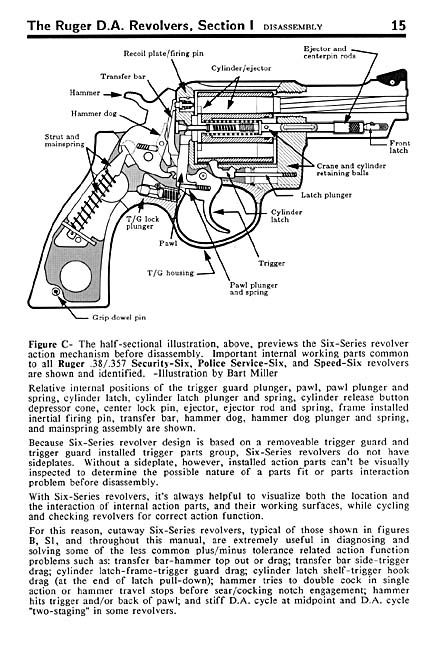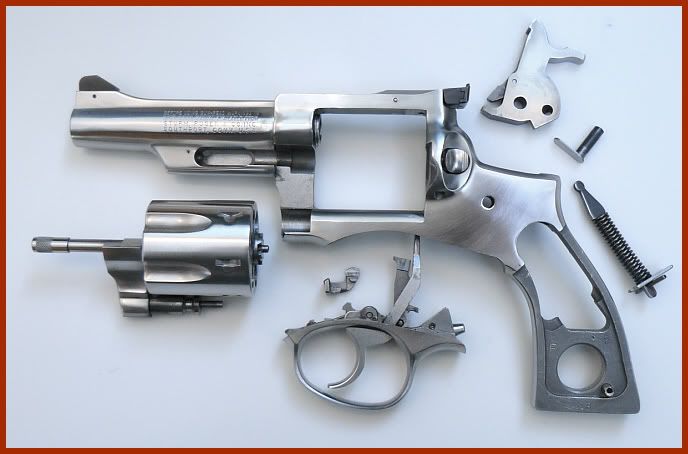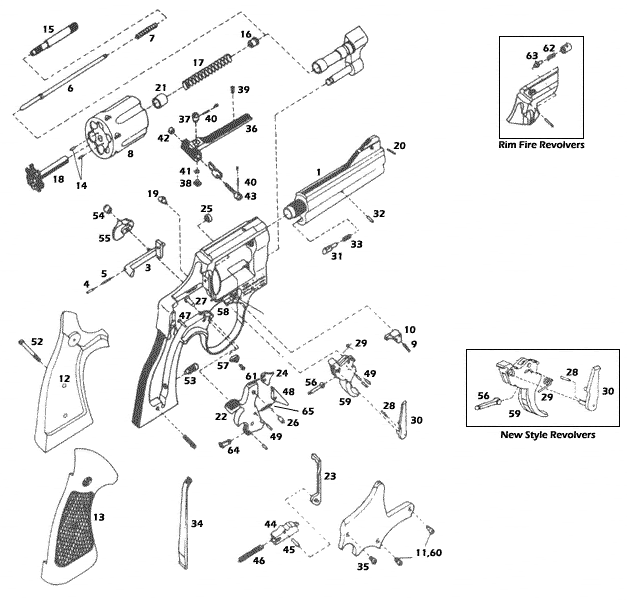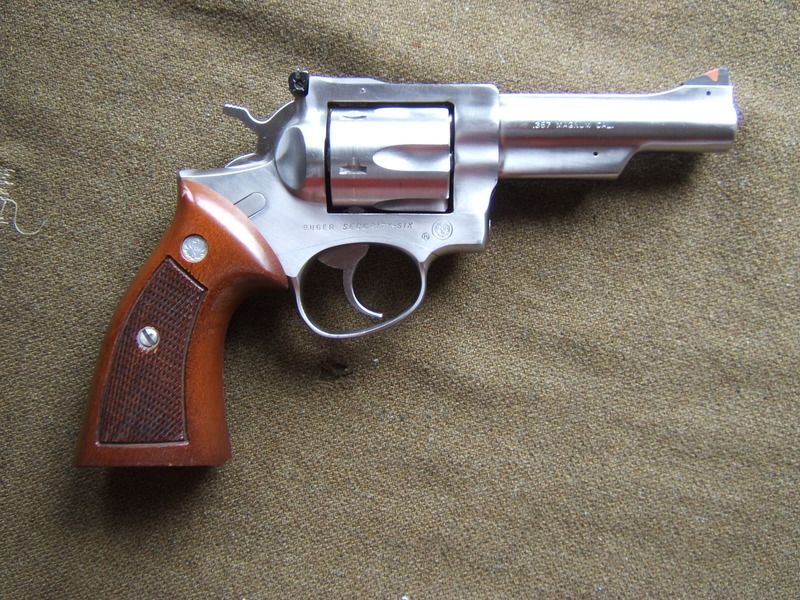
When I was stationed in Korea for the second time in 1977 I had been and was old enough to purchase a handgun. Unfortunately, money hadn't been available for the purchase of such, at the time, a luxury as a handgun. However, in Korea the second time I was able to accumulate some "real" money. I managed to save enough to send to my father in 1979 to buy a handgun I could have when I returned from Korea.
Of course this entailed a long and detailed look at all the options available at that time. Lacking experience I thought that I could handle the recoil of the .38 Special and/or .357 Magnum cartridges. While I'd saved my money, I wasn't going to be profligate about spending that money and I wanted value. Looking at Colt and S&W products of the time gave me pause every time I got to the Fair Trade Price (the MSRP of the time). However, Ruger had a good product with their dash Six line and I'd already had experience with Dad's Speed-Six.
Other considerations were portability, durability, and appearance (yeah, it had to LOOK good, too!). As to portability, the 4" barrel seemed the best to me. It still provided adequate ballistic output but wouldn't keep me from wearing most holsters while driving. I'm not a big person, only 5' 8" tall, and a large/long barreled gun wouldn't have been appropriate.

The Ruger dash Six series already had a wonderful reputation for strength and were widely carried by police departments. Also, in my mind, durability was resistance to rust and stainless steel was a new and wonderful thing at the time. I had to have stainless. Colt didn't even provide that option then (as I remember it). Smith and Wesson had a limited number of models and charged a premium. Ruger's price for their stainless guns was less than S&W's comparable blued steel model. Of course, at that time, wonderful qualities were assigned to stainless steel. So, stainless was the choice. It also LOOKED cool/attractive. Eureka! There it was! Appearance!
So the choice, made after much thought, was made, money sent to Dad, and the waiting began. In the meantime I chronicled my search in Handgun Hunter, edited by J. D. Jones. It was heavily (and rightly so) edited by Mr. Jones but I was published.
I returned home in February 1981 to find my revolver waiting for me. It was a Ruger Stainless Security-Six with 4" barrel chambered for the .357 Magnum cartridge. I was pretty excited. There was one problem. When shooting .357 Magnum ammo, cases would stick in one chamber. The gun was returned and then came back with the problem, a misfit ejector star, fixed. The gun shot well with .38 Specials and .357 Magnums. I did take a couple of squirrels with wadcutters, it was that accurate. I also carried it when deer hunting. It was easy to carry, recoil wasn't bad, but I usually left it in the house with the wife.

Sadly, there came a time when the wife left and the revolver did the same being sold to pay the lawyer bill. I really regret that. It was a good gun and it was my first cartridge handgun purchase. I'd like to find it again. Unfortunately, I can't find the serial number. That's a real bummer. I'm sure to record serial numbers now. Should one be found, I would take another. It was that good.
Ammo for these guns is a simple thing. Any .38 Special or .357 Magnum ammunition loaded to SAAMI specs is safe in these revolvers. I think they will stand up to repeated use of the .357 Magnum cartridge much better than the S&W Model 19 (although I know of one Model 19 that locks up just fine after 30K rounds of .357 Magnums!).
The following photo, taken from Marstar.com, is of "my" revolver in the configuration in which I bought and used it.
11/14/08
So, guess what happened, I found another. I have the serial to my old gun but despite looking at every one that I find locally, have yet to find it. However, this one is here! Hurrah. These are great guns. Some LEOs preferred it to the S&W M19s. This one is about 4 years newer than the old one being built in 1983.

You might note that my gun has the scalloped right recoil shield. The highest serial noted without the scallop is 158-31335. Also, it has the later high-back frame. The difference between the earlier 150-series frames and the later production is shown in the photo at bottom left.





































